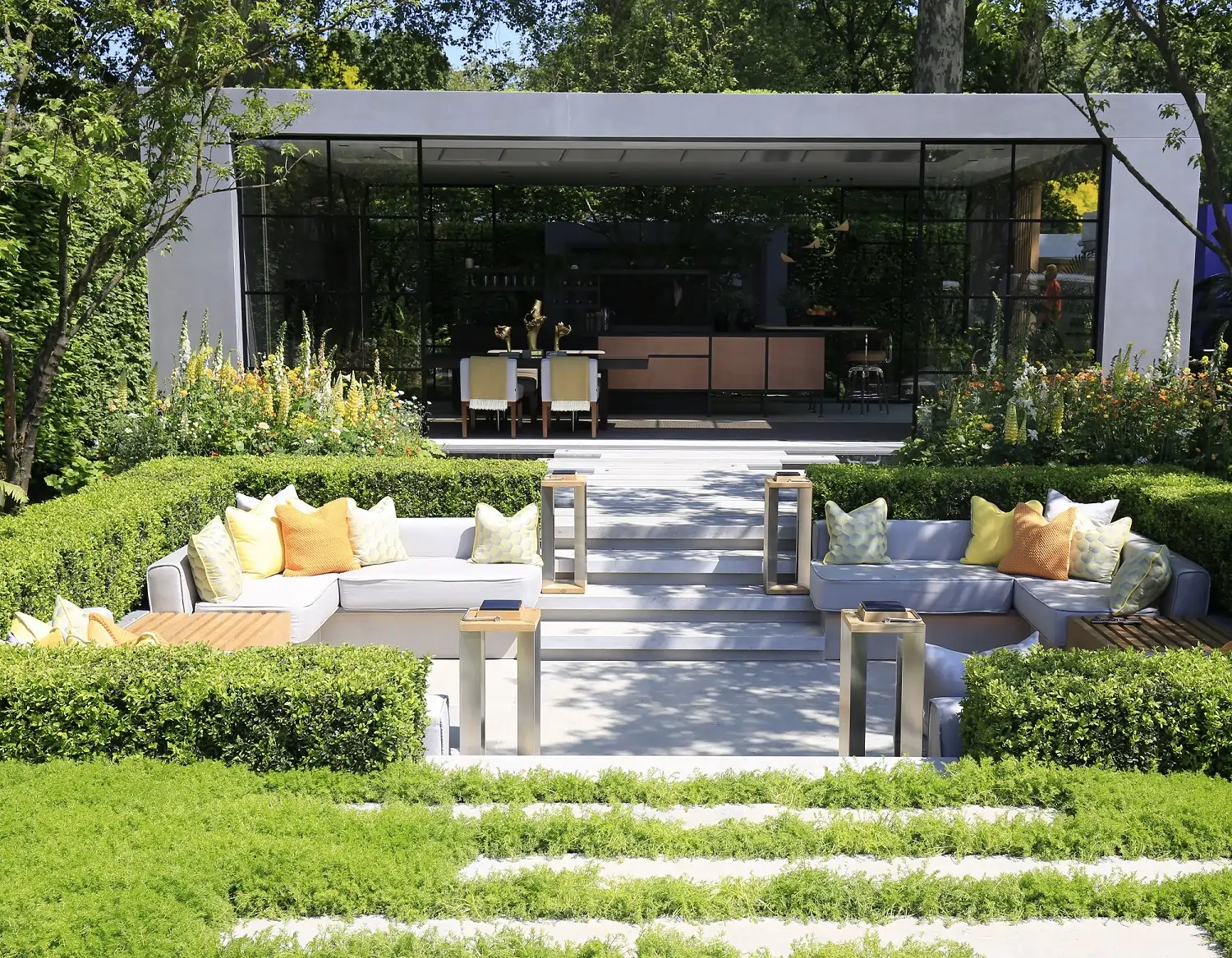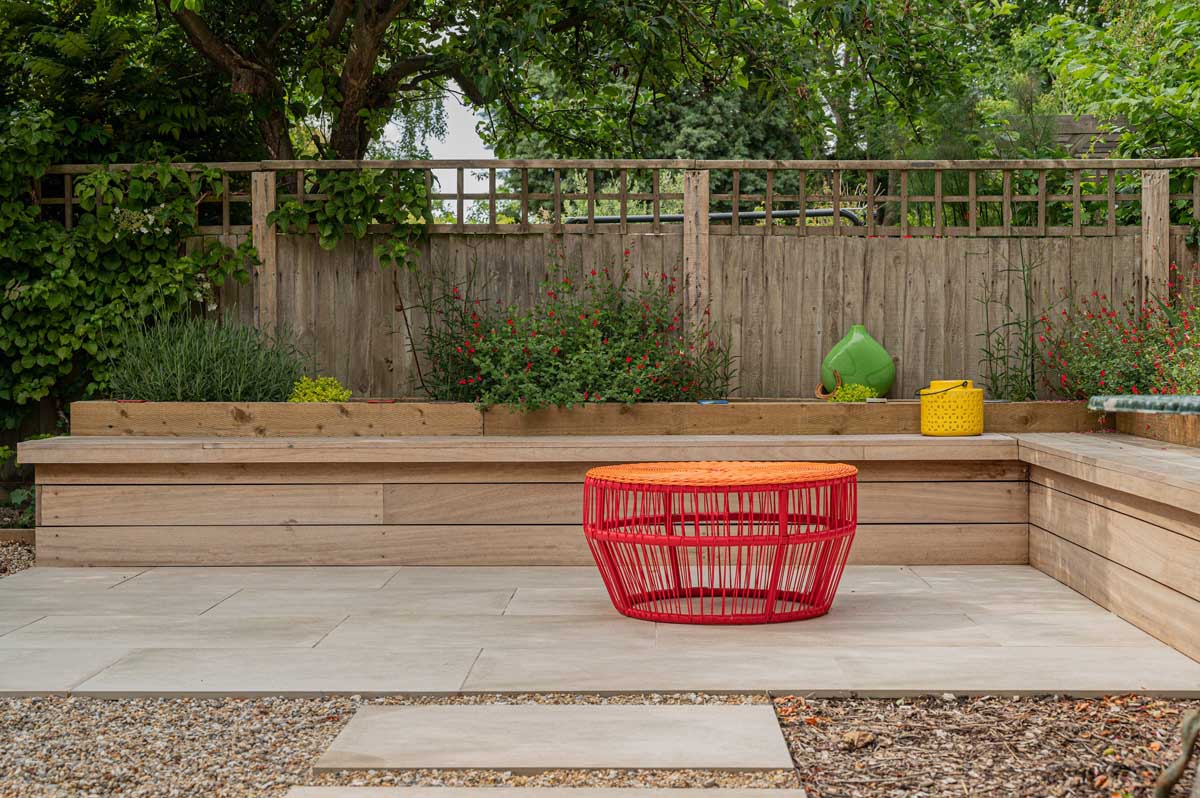Clients regularly ask us about suitable paving patterns for their porcelain or natural stone patio. Discover the different options, and how they look in your paving design.
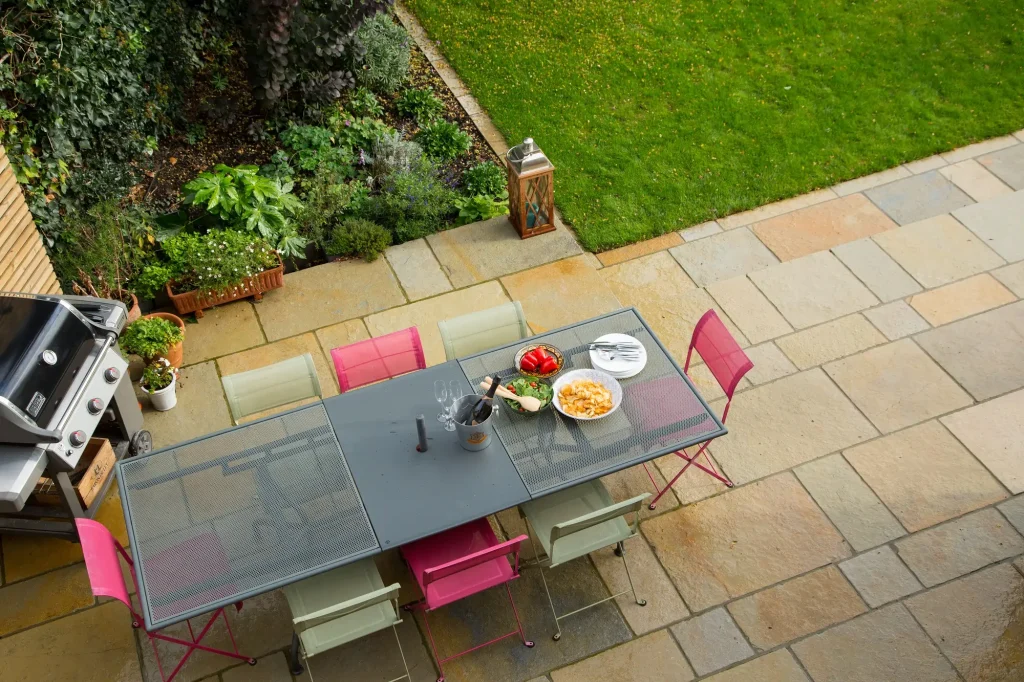
How to choose a paving pattern
There are no hard and fast rules. It depends on the style you are trying to achieve. Generally, if you want to create a traditional garden design, random patterns are the most effective. Limestone, slate and sandstone paving work well in traditional gardens and can be laid in either three or four flag patterns.
This is not to say that these types of natural stone cannot be laid in single-sized running bond or stack bond patterns. When you are trying to create an individual outdoor space, laying stone in a different pattern can really distinguish your garden from the rest. There is plenty of scope for different paving ideas in Indian sandstone patio designs. Mint sandstone, for example, looks stunning when laid in stretcher bond pattern using 900x600 size.
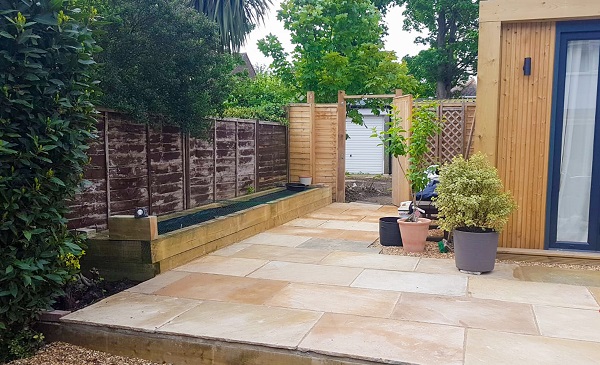
Modern paving patterns
On the other hand if you are trying to create a contemporary outdoor space it is generally accepted that using a single-sized paving slab is the best way to achieve this. For contemporary designs, porcelain paving and sawn paving comes into their own.
Paving pattern ideas
Running bond
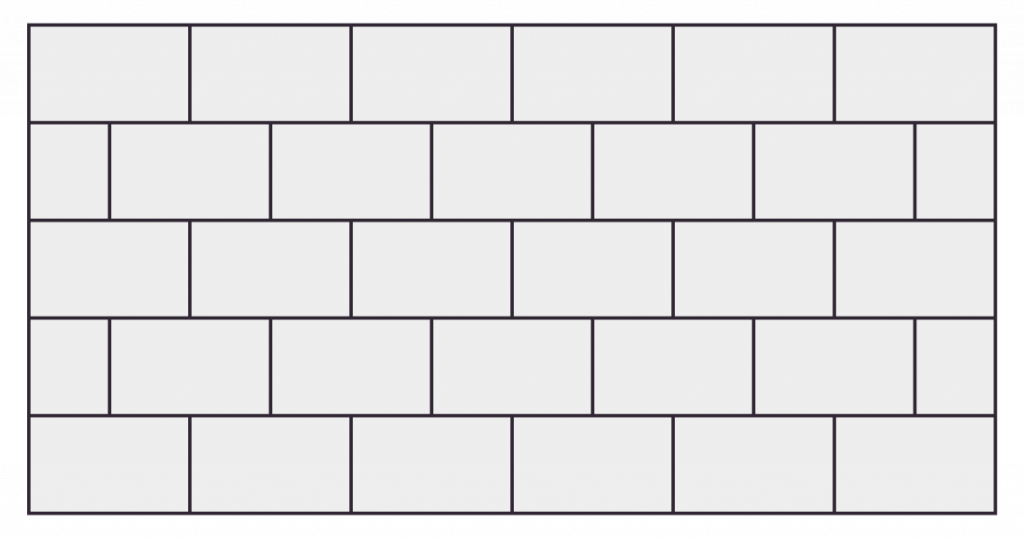
The diagram above shows a two-course running bond, where the joints in every other course match up. It's perfectly possible to create a three-course stretcher bond pattern, as in the image at the top of this article, where the joints on every third row match up. This maintains the continuous horizontal joint lines while adding a slightly more random feel.
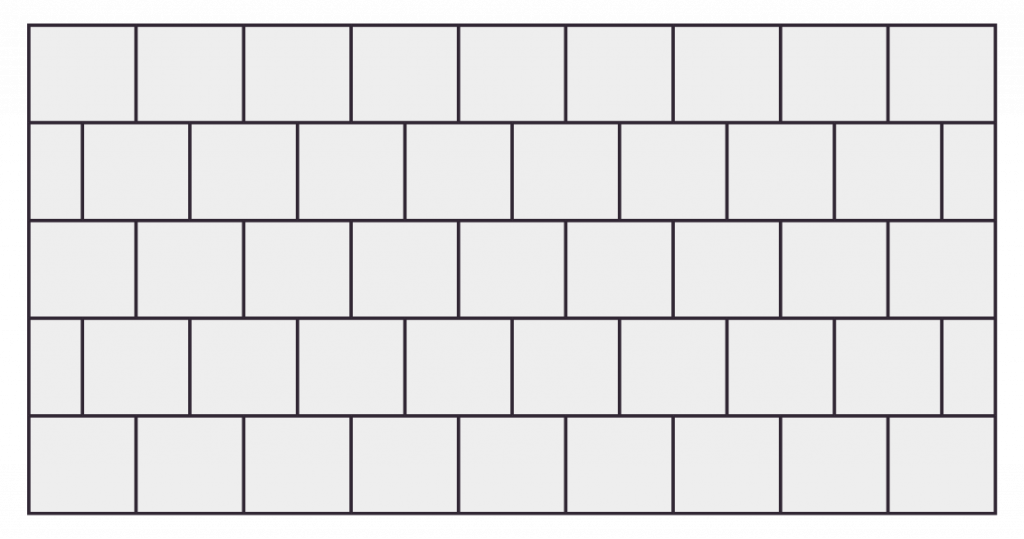
More unusual is the use of a running bond pattern with square slabs. This injects energy into the choice of shape. If that feels too busy for a large space, using extra large patio slabs makes this less likely.
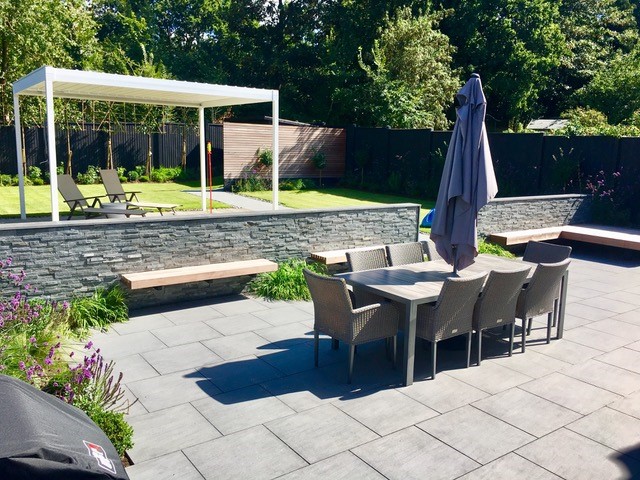
In the patio above, the choice of running bond paving pattern for the 600x600mm Trendy Black porcelain outdoor tiles adds energy to the space and complements the small size of the bricks in the stone wall cladding. Together they make a contrast with the smooth expanse of lawn beyond.
Stack bond
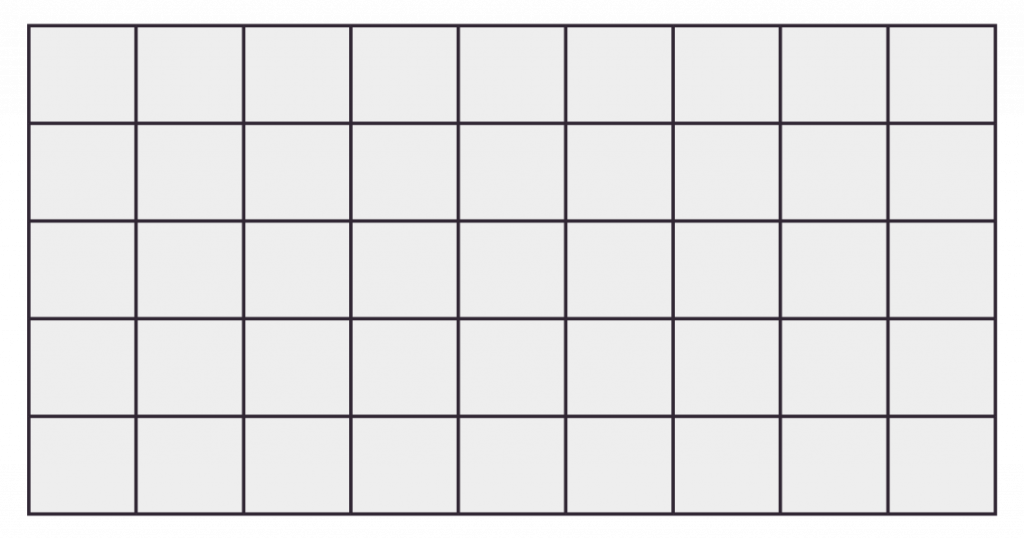
The stack bond layout has a classic feel, creating a calm, rooted space. This can be useful for a small garden design, as it feels self-contained, not pushing out to the boundaries.
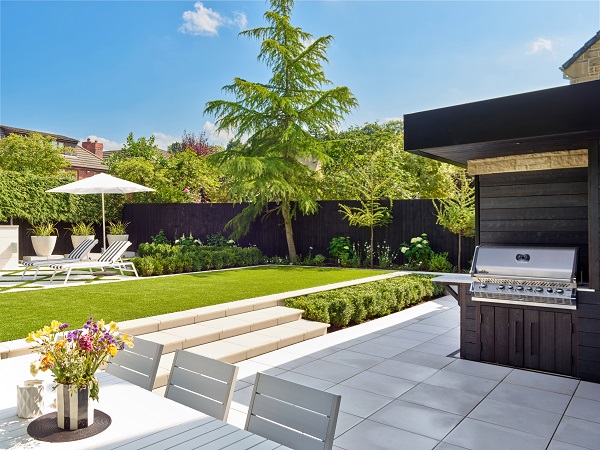
An additional modern twist would be to choose a patio design with 800x800mm outdoor tiles. These work best in a chequerboard pattern, but create a more expansive sense of space.
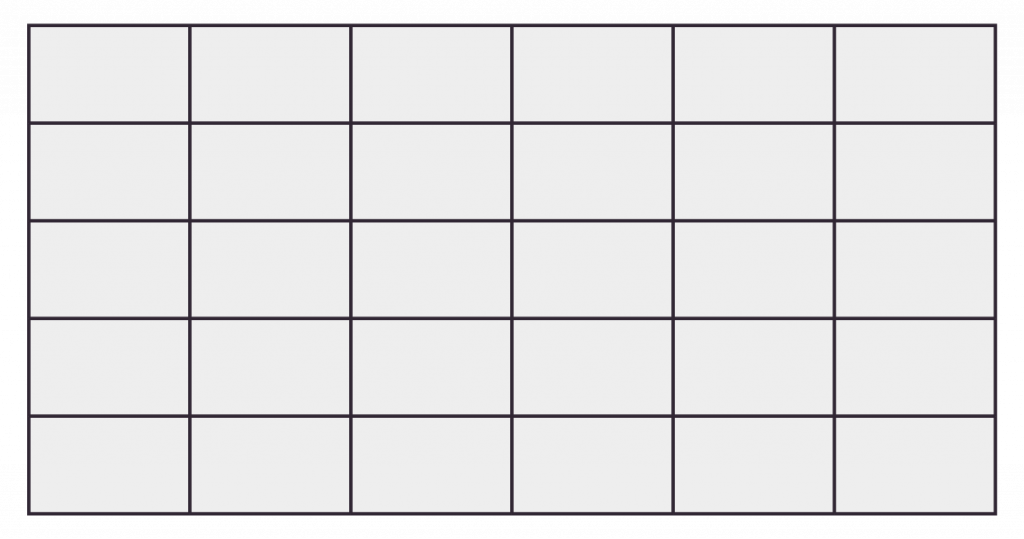
Using rectangular paving slabs in a stack bond pattern is unusual, but adds more movement to the design. An additional design decision when using rectangular paving is the direction of lay.
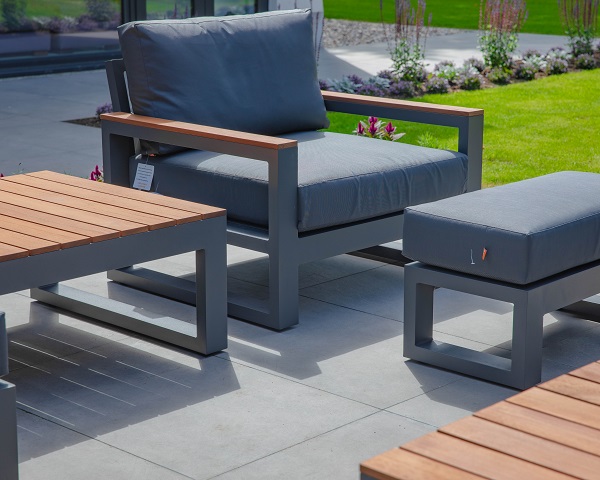
Here, the slabs are at right angles to the house, something that gives them a dialogue with the house windows which have deep narrow frames, and creates a dynamism leading towards the rest of the garden. At the same time, it's a very modern choice that works well with the furniture and house architecture.
Random course patterns
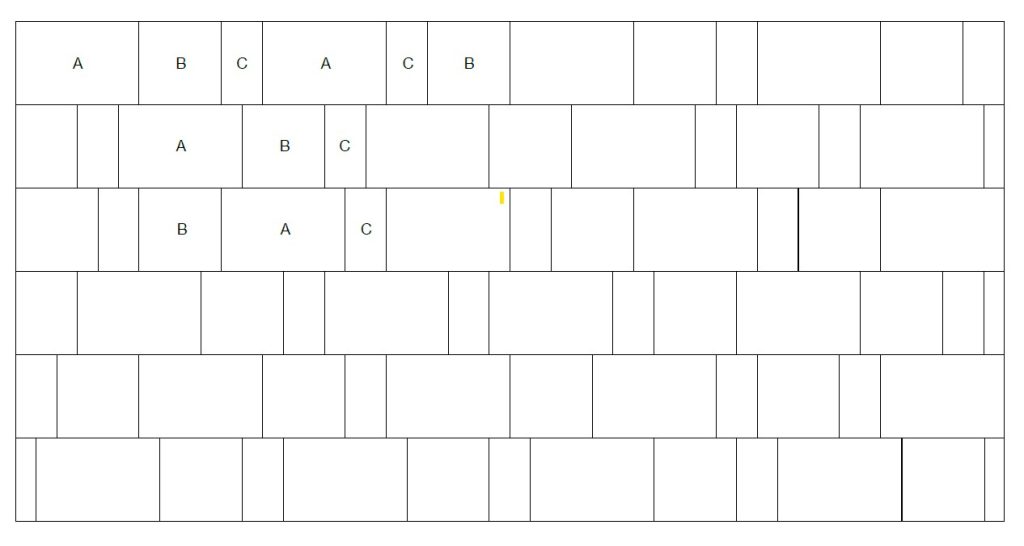
A wide selection of our natural stone paving comes in a choice of slab sizes. Mixing these sizes allows for a variation on running bond, with a random or repeating pattern of slabs along each course.
You can alternate courses, creating two different ones as in the approach to the front door below, or lay several different courses, as in the triple repeat at the top of this article.
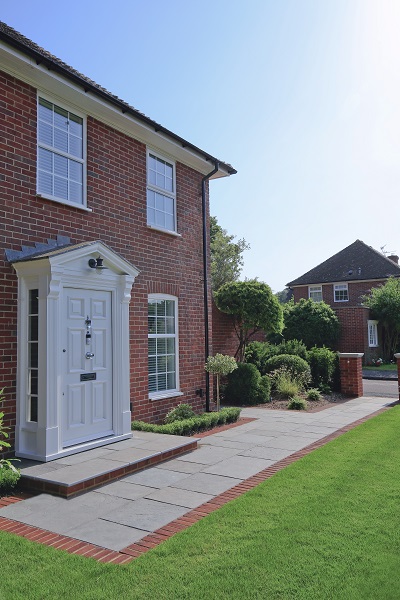
Because of slight variation in colour between batch numbers, we don't recommend mixing sizes in porcelain paving.
Project pack patterns
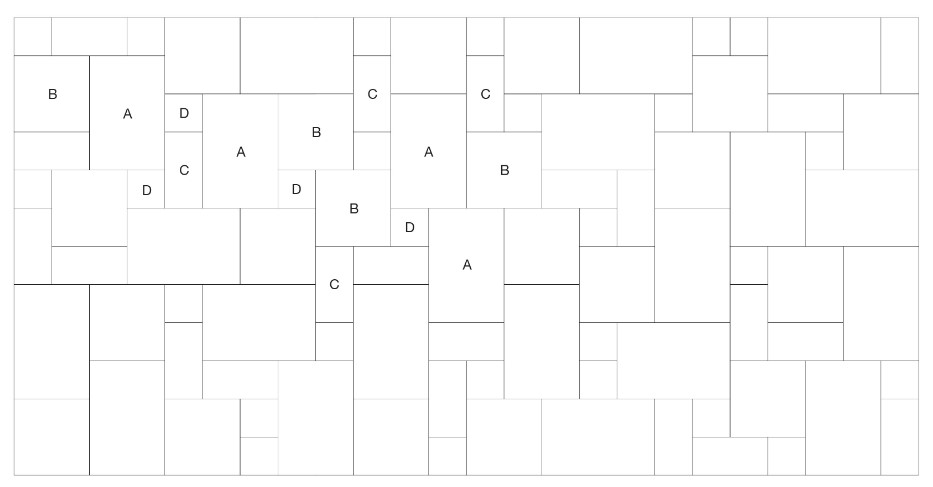
Project packs, available in a selection of limestone and riven Indian sandstone paving, allow you to put down a relaxed patio laying pattern which fits well into so many situations. Joint lines appear more random and tend not to lead the eye far, while creating interest and movement.
However, it is also possible to create more linear patterns with project packs, arranging the different-sized pavers in different courses, as seen in the project that heads this page.
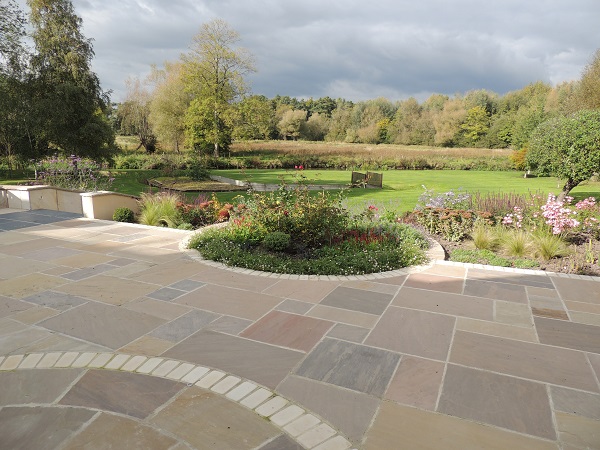
As you can see in the above picture, there are other options to add a personal touch to patios. It's worth including setts for versatile paving detail. For an entirely different look, plank paving creates interesting path and patio options.
If you need any further information about porcelain and natural stone paving patterns, contact a member of our sales team. Or why not visit one of our showrooms, where you'll be able to view different patterns and discuss your project with our knowledgeable staff?
Post updated: August 2023



